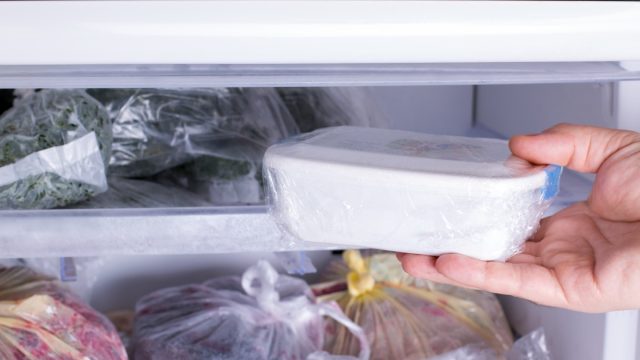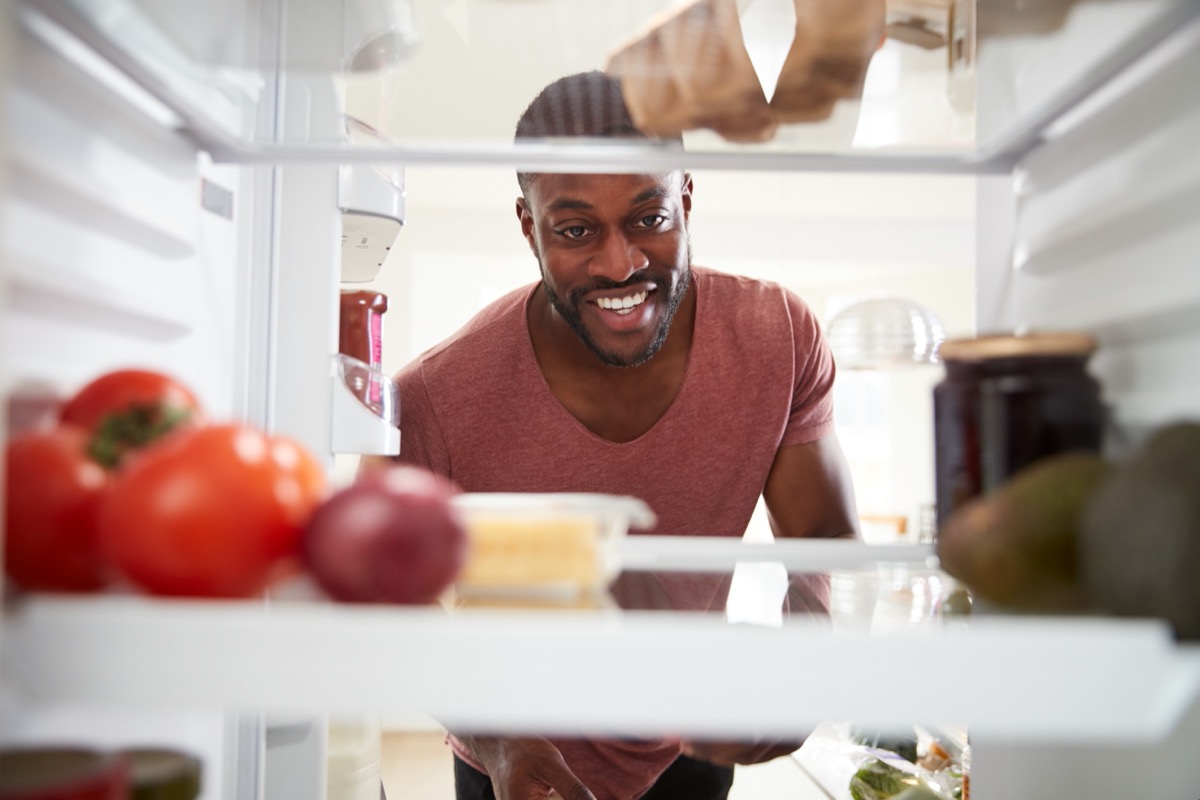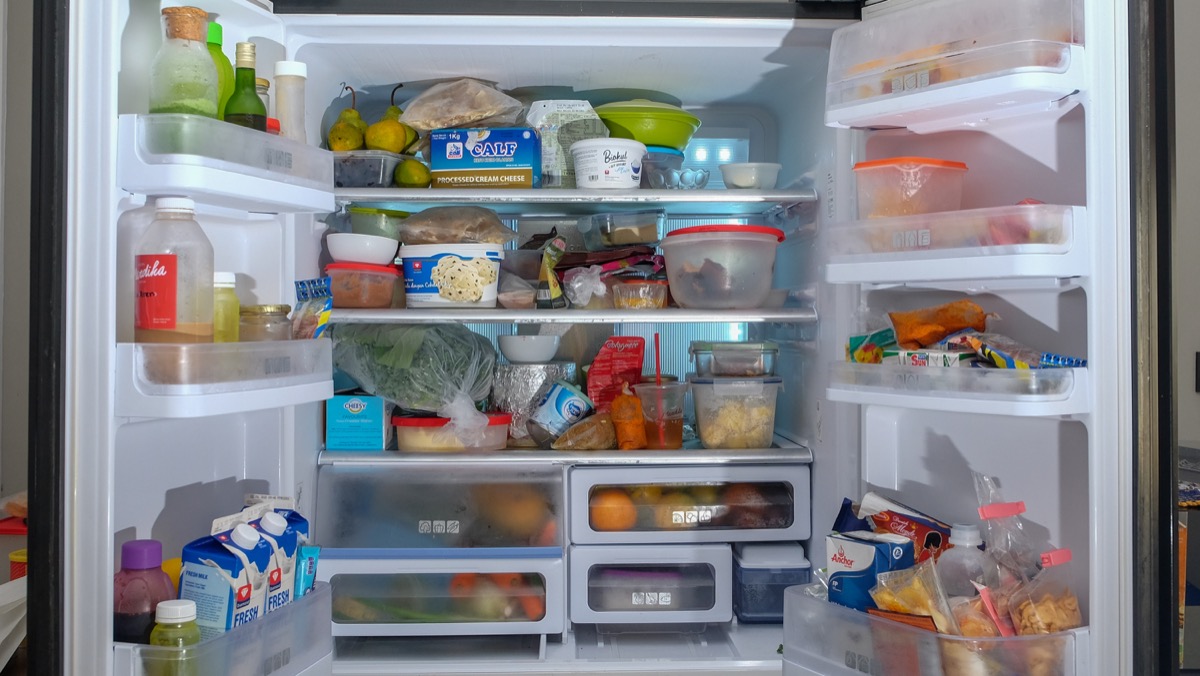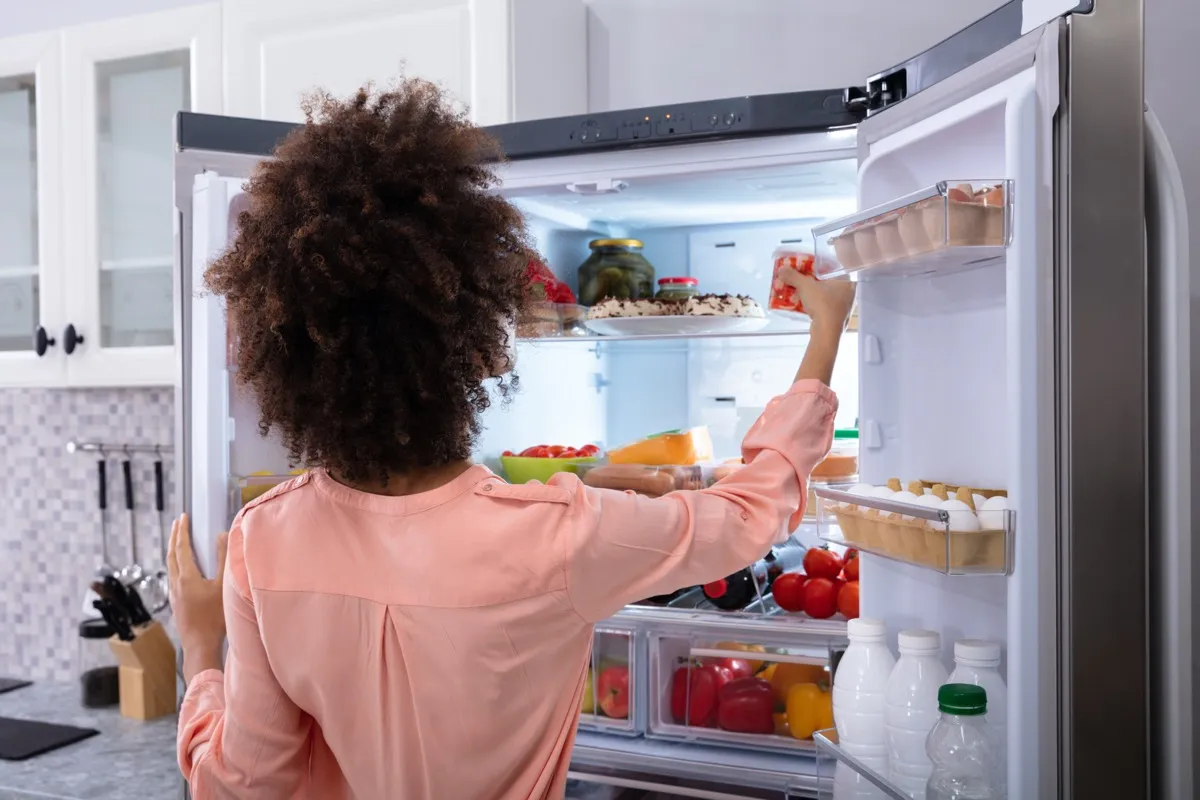Never Store Your Leftovers in This Part of the Fridge, Experts Warn
This common habit can cost you big bucks and waste tons of food.

Around the holidays, you're more likely than usual to end up with a refrigerator full of leftovers. But that food may go to waste as it lingers there forgotten. In fact, a 2020 study from Penn State University researchers found that the average American household wastes 31.9% of the food it buys, which comes out to more than $240 billion in food waste each year. And wasting food doesn't just waste money—it also increases your carbon footprint and methane production in landfills, the U.S. Environmental Protection Agency (EPA) warns. Luckily there are some incredibly easy ways to reduce how much food you waste, starting with how you store leftovers in your fridge. Read on to learn more.
RELATED: Never Eat Microwaved Food Without Doing This First, CDC Says.
Don't push your leftovers to the back of your refrigerator.

If you're trying to be better about wasting food, it helps to see what you've actually got in your fridge so you can remember to use it. Too often, we end up pushing our leftovers to the back of the shelves and putting our most used items—like milk or butter—within easy reach. But by simply storing your commonly used items further back and pushing your leftovers toward the front of the fridge, you can keep them in your sight and front of mind.
RELATED: Never Use This Popular Ingredient When Cooking, CDC Warns.
Be creative with your leftovers.

Denmark's StopWastingFoodMovement.org lists several tips to get into the habit of feeding on, instead of forgetting, your leftovers. For one, you can be creative with how you use your leftovers. For example, yesterday's chicken can be turned into today's chicken salad, or vegetables from dinner two days ago can be transformed into a soup or stew for the weekend.
Meanwhile, the EPA suggests that you plan one night a week to eat your leftovers, saving on meal prep and food wastage.
Another key is to make those meals as appetizing as possible. Don't eat your leftovers straight out of the Tupperware—plate your food so that you're more likely to think of your leftovers in a positive light.
Plan your meals ahead of time.

Another way to avoid the leftover trap is to plan your meals. That means both looking up recipes before heading to the store and taking good stock of what you've already got in your cupboard. Stop Wasting Food Movement says planning out portions also makes a big difference, as people tend to overestimate how much they and their families will eat.
Instead of buying and then cooking too much food, you can keep snacks with a longer shelf life, like crackers or dried fruit, around to supplement meals for hungry family members.
For more tips sent right to your inbox, sign up for our daily newsletter.
Check the temperature setting on your refrigerator.

You can also make the most of what's in your fridge—and save on your energy bills—by ensuring that the appliance is set to the right temperature. Put it too high and food spoils, but put it too low and certain items could develop ice crystals or freeze. According to TheKitchn, your fridge should ideally be kept at between 35 and 38 degrees Fahrenheit.
Speaking of temperature, the warmest part of your fridge is the door, because it's exposed to the most outside air when you go searching for items on the shelves. Perishable items that must be kept cold to stay fresh, such as milk, should be stored further into your fridge to give them the longest life possible.
RELATED: The Worst Thing You're Doing at Thanksgiving, Infectious Disease Doc Says.





















